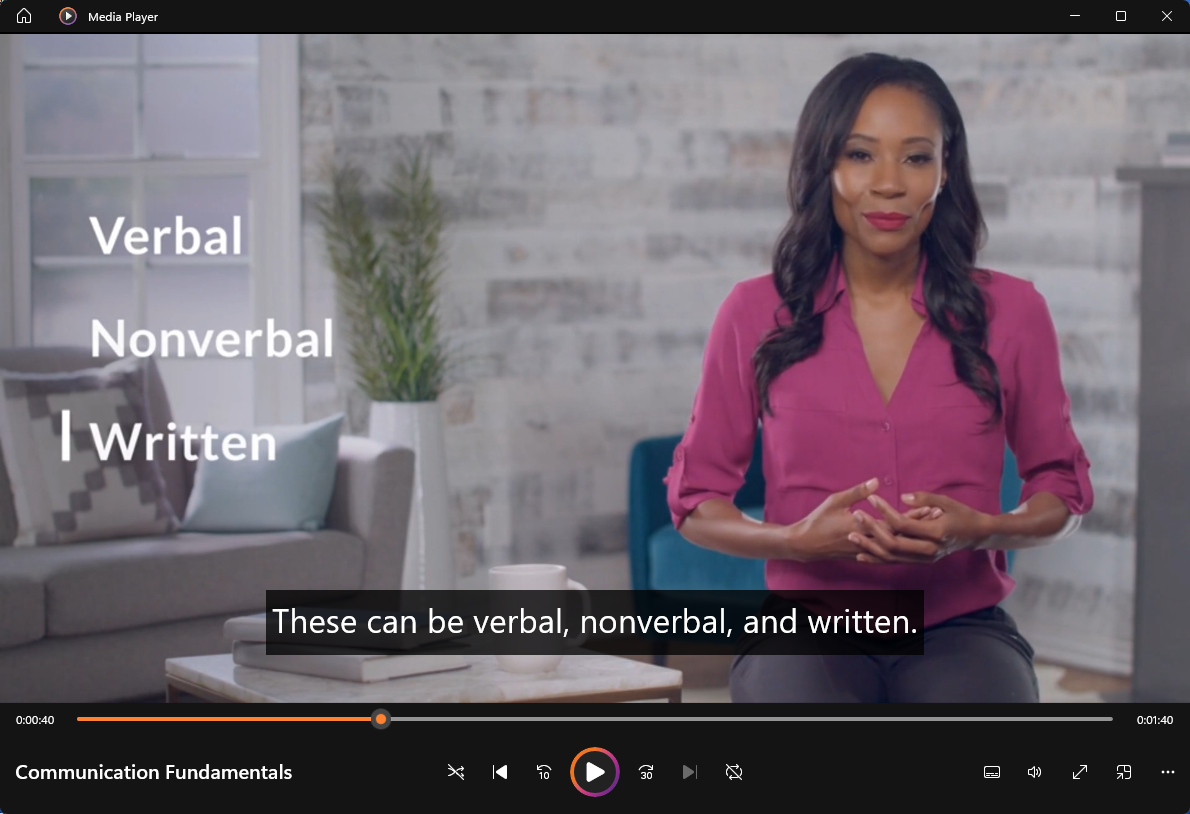In today's digital environment, relying solely on blog posts is often not enough to captivate your audience. You, as a content creator or digital marketer, are likely looking for innovative ways to enhance engagement and reach a wider audience. This is where transforming written content into multimedia formats comes into play. By leveraging AI tools, you can convert written articles into videos, podcasts, infographics, and more, thereby enriching the user experience and boosting your content's performance across various platforms.
Multimedia content is more than just an appealing addition; it serves a functional purpose. Research shows that multimedia formats can significantly increase engagement rates. For instance, videos achieve approximately 2.5 times more engagement than traditional text-based posts. Additionally, infographics tend to garner three times as many shares on social media, while video content keeps users engaged for about 2.6 times longer than written articles.
This guide will outline the benefits of multimedia content, introduce AI tools that facilitate this transformation, and provide practical steps for creating multimedia assets. We'll also discuss important considerations, including SEO, accessibility, and legal issues, ensuring your content resonates effectively while remaining compliant. By the end of this article, you will have a comprehensive roadmap for enriching your blog posts and maximizing their impact.
Why Shift to Multimedia? Understanding Engagement Potential
Let’s dive into the essential reasons for transforming your blog posts into multimedia formats.
Engagement metrics are crucial for gauging the effectiveness of your content. Transitioning to multimedia formats can significantly boost these metrics. Research from Hootsuite indicates that repurposed multimedia content can achieve engagement rates that are 2.5 times higher compared to original written blog posts. Furthermore, utilizing infographics can lead to three times more shares on social media platforms, broadening your reach.
One primary advantage of multimedia is its capacity to cater to different audience preferences. Some users prefer the depth of text, while others find videos more engaging and entertaining. In fact, studies show that videos tend to retain user attention, keeping them on the page approximately 2.6 times longer than text alone.
Graph shows engagement rates for various social media platforms (Source: Hootsuite)
By integrating multimedia into your content strategy, you are not just enhancing the aesthetic appeal but also addressing varied consumer preferences, ultimately fostering deeper engagement.
How AI Tools Enhance Your Content Creation
Selecting the right tools can make a significant difference when it comes to transforming text into engaging multimedia. Below are some of the top AI tools available in 2024 that can help you convert your written content into videos, podcasts, and more.
-
Synthesia: This AI video platform enables you to create professional videos from text in just 15 minutes. It offers text-to-speech capabilities in over 120 languages, making it ideal for producing video content.
-
Descript: An all-in-one tool that simplifies podcast design and production. Descript allows you to write, record, transcribe, and edit audio and video content seamlessly, making it especially useful for adapting blog content into podcasts.
-
WellSaid Labs: Specializing in real-time voiceovers, this tool streamlines the audio generation process for blog posts, making them accessible to auditory learners.
-
Pictory: This platform excels at creating short video content, making it a perfect option for repurposing your blog content into succinct social media clips.
-
Jasper.ai and Canva: While Jasper is great for generating marketing copy and visual elements, Canva provides an easy-to-use interface for creating visually appealing graphics that accompany your multimedia content.

Screenshot showcasing an AI tool designed for content creation (Source: Visily)
When considering these options, weigh the pros and cons according to your specific content goals. The right AI tool can streamline your content creation process and facilitate a smoother multimedia transformation.

Infographic detailing features of AI tools for multimedia content transformation (Source: The HOTH)
Steps to Transform Text Into Dynamic Video
Creating engaging videos from your blog posts doesn’t have to feel overwhelming. Here’s a step-by-step approach to guide you through the process:
-
Choose Your Tool: Start by selecting an AI tool that aligns with your needs. For instance, if you choose Synthesia, you can quickly generate videos using their extensive library of avatars and voiceovers.
-
Prepare Your Script: Extract the key points from your blog post, ensuring to keep them concise. This script will serve as the basis for your video.
-
Incorporate Visuals and Audio: While your AI tool will help create the speech and imagery for your video, consider adding text overlays and background music to enhance engagement.
-
Finalize and Edit: Use the editing capabilities in your chosen platform to refine your video. Make sure it flows naturally and aligns with your brand voice.
-
Publish and Promote: Once the video is complete, share it on your blog and across your social media channels.
Research indicates that transforming text into video can significantly boost conversion rates, with some case studies showing a 24% higher rate compared to traditional written posts.
Flowchart illustrating the process of transforming text into a video (Source: ResearchGate)
By following these steps, you can effectively streamline your content creation and deliver content that is both compelling and informative.
The SEO Advantages of Multimedia Content
Multimedia content is not just visually engaging; it can also significantly enhance your SEO efforts. Here’s how you can optimize multimedia for better search engine rankings.
Incorporating multimedia allows search engines like Google to rank your content more favorably. This is especially true if you include transcripts, captions, and proper alt text for images and videos. Doing so not only increases accessibility but also provides additional keyword opportunities for improving your search engine results.
Research from Goldcast confirms that repurposed content can lead to a 24% higher conversion rate compared to traditional formats. This is crucial in a digital landscape where competition for user engagement is intense.
Moreover, videos can have a notable impact on user retention. By increasing the amount of time users spend on your page, you signal to search engines that your content is valuable. This can lead to improved SEO rankings.

Infographic detailing SEO best practices specific to optimizing multimedia content (Source: The HOTH)
By implementing these SEO techniques, you can create a more user-friendly experience while enhancing your visibility in search engine results.
Ensuring Accessibility in Multimedia Content
Access to your information is fundamental. It is essential to make sure your multimedia content is accessible, which is not only a legal requirement but also an ethical obligation.
Start by including captions and transcripts in your videos; this makes your content comprehensible to individuals with hearing impairments and also enhances SEO. Providing these elements can foster user trust and increase engagement with your content.
AI tools like Descript make it easy to add captions. Additionally, it is wise to utilize accessibility checkers to ensure that your content meets necessary guidelines.
Research suggests that accessible content can lead to greater audience growth, so prioritizing inclusivity will ultimately benefit your reach.

Example of a video displaying captions, highlighting the importance of accessibility (Source: Articulate)
Making your content accessible should be a key consideration in your multimedia strategy.
Navigating Legal and Ethical Considerations in AI Content Creation
Navigating the legal and ethical landscape surrounding AI-generated content is vital to ensure compliance and maintain credibility.
Understanding Copyright Issues
Be aware that AI-generated works may not be eligible for copyright protection, as affirmed by the U.S. Copyright Office. It's important to ensure that any material utilized in your content creation complies with copyright laws.
Transparency Is Key
Being transparent about your use of AI can help build trust with your audience. Clearly communicating how AI contributes to your content can enhance your credibility.
Addressing Bias
AI systems can replicate biases found in their training data. You should aim to create diverse and inclusive multimedia content to avoid reinforcing harmful stereotypes.

Illustration depicting the intersection of AI technology and legal ethics (Source: Vecteezy)
Understanding these legal considerations can help you create effective yet compliant multimedia content.
Future Directions for AI-Powered Content Transformation
The field of content creation is ever-changing. Let’s explore the anticipated trends that may shape the future of content marketing by 2025.
Emphasizing Multimodal Content Strategies
The emergence of tools capable of generating content across various formats simultaneously is significant. For example, Synthesia allows businesses to quickly convert text into videos complete with diverse avatars.
The Rise of Hyper-Personalization
Expectations are shifting towards hyper-personalization, meaning that content distribution will better align with individual user preferences, which can enhance engagement rates.
Integrating Emerging Technologies
AI agents are becoming increasingly capable of autonomously managing complex tasks related to content distribution, making processes more efficient.
Graphic illustrating potential trends in AI technology (Source: LinkedIn)
By staying informed about these trends, you will be better prepared to adapt your content strategies effectively.
Conclusion
Transforming your blog posts into multimedia formats using AI tools can significantly enhance engagement and the effectiveness of your overall content strategy. By utilizing the right tools, you can effectively reach wider audiences, improve SEO metrics, and ensure your content is accessible to all users.
As you look to the future, remain informed about legal considerations and emerging trends in AI. Your commitment to adapting both content and strategy will not only strengthen your marketing efforts but also maximize your success in today's evolving digital landscape. By embracing these changes, you can lead the way in the next wave of content marketing.


コメント (0)
サインイン ディスカッションに参加するには .